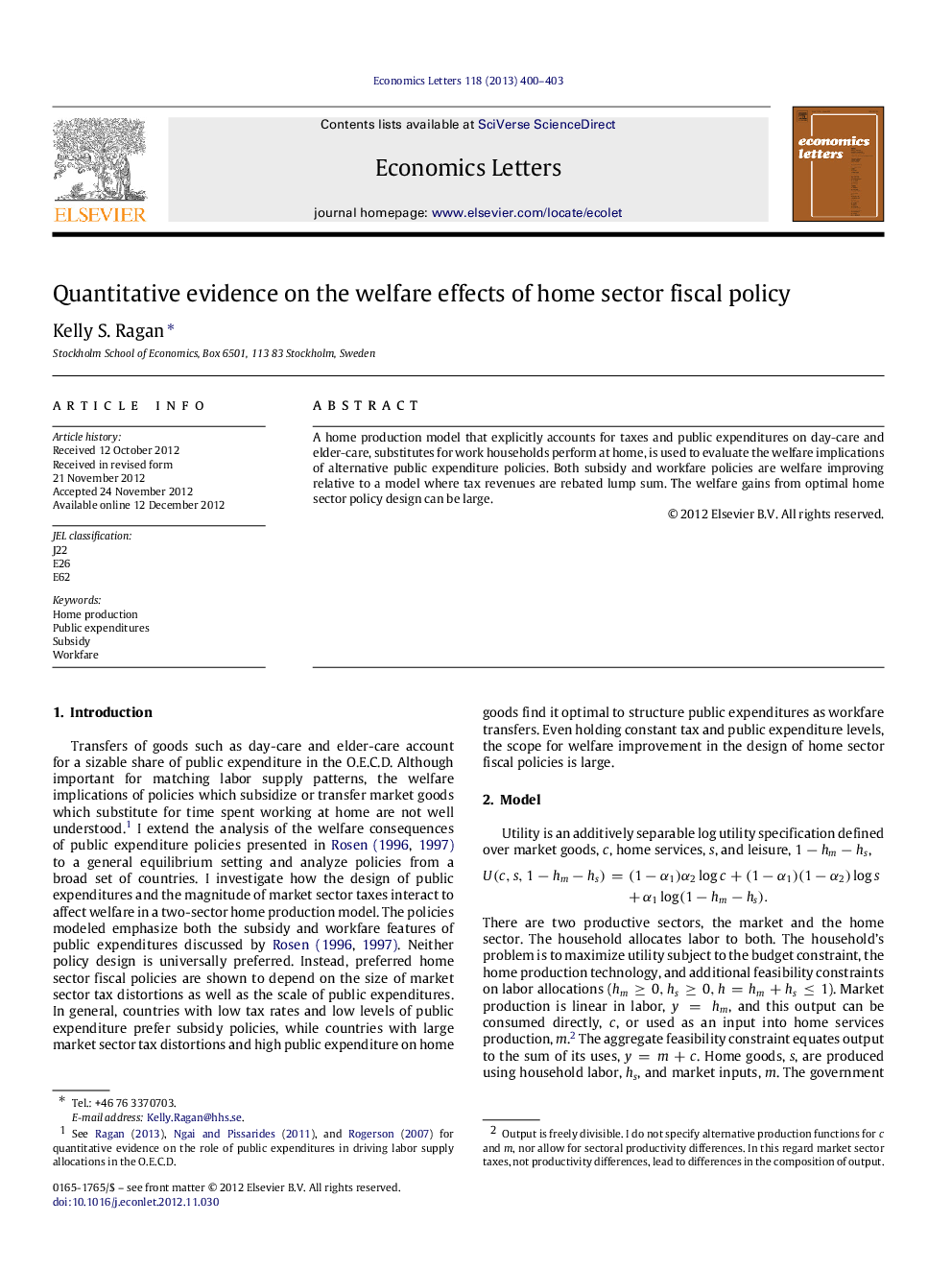| Article ID | Journal | Published Year | Pages | File Type |
|---|---|---|---|---|
| 5060015 | Economics Letters | 2013 | 4 Pages |
A home production model that explicitly accounts for taxes and public expenditures on day-care and elder-care, substitutes for work households perform at home, is used to evaluate the welfare implications of alternative public expenditure policies. Both subsidy and workfare policies are welfare improving relative to a model where tax revenues are rebated lump sum. The welfare gains from optimal home sector policy design can be large.
⺠Public transfer of services that substitute for home work can be welfare improving. ⺠Small subsidies can have a large welfare effects in low tax economies. ⺠Workfare policies are preferred in high tax/high public expenditure economies. ⺠Low tax/low public expenditure economies prefer subsidy policies. ⺠The potential welfare gains from improved policy design are large.
